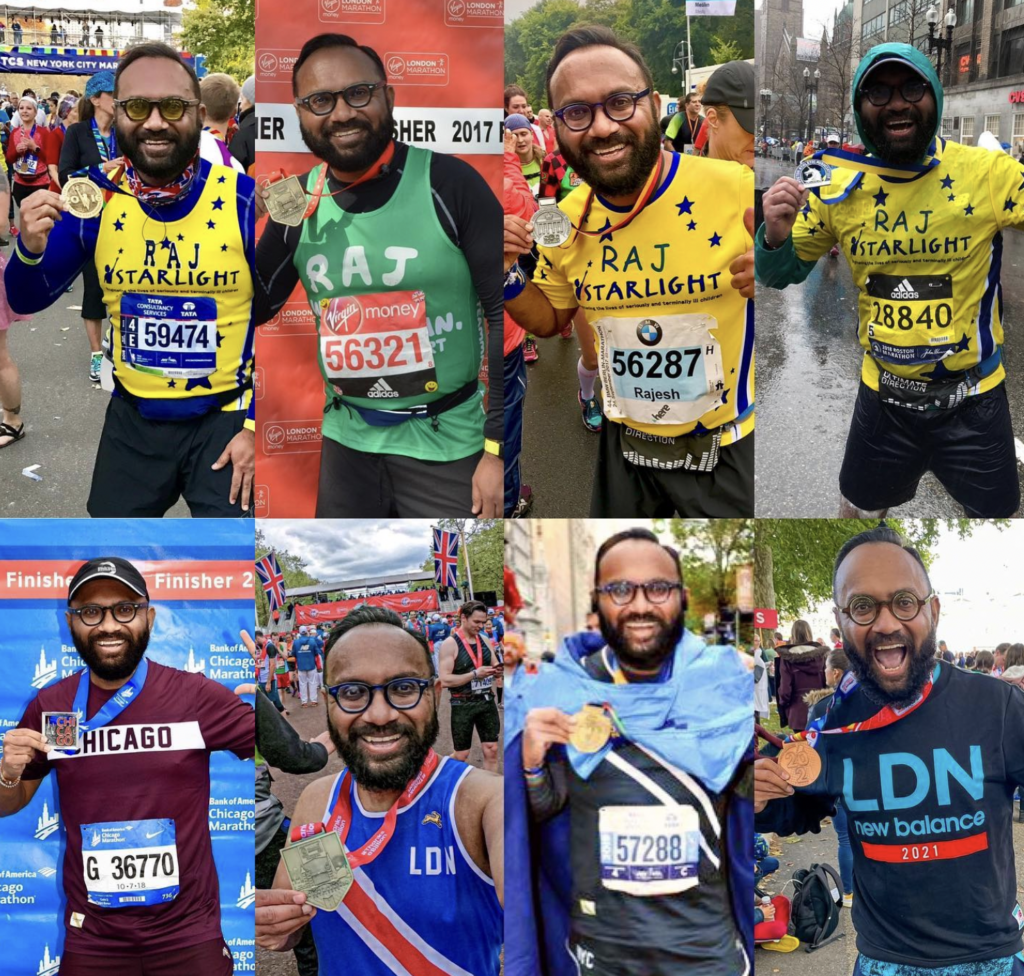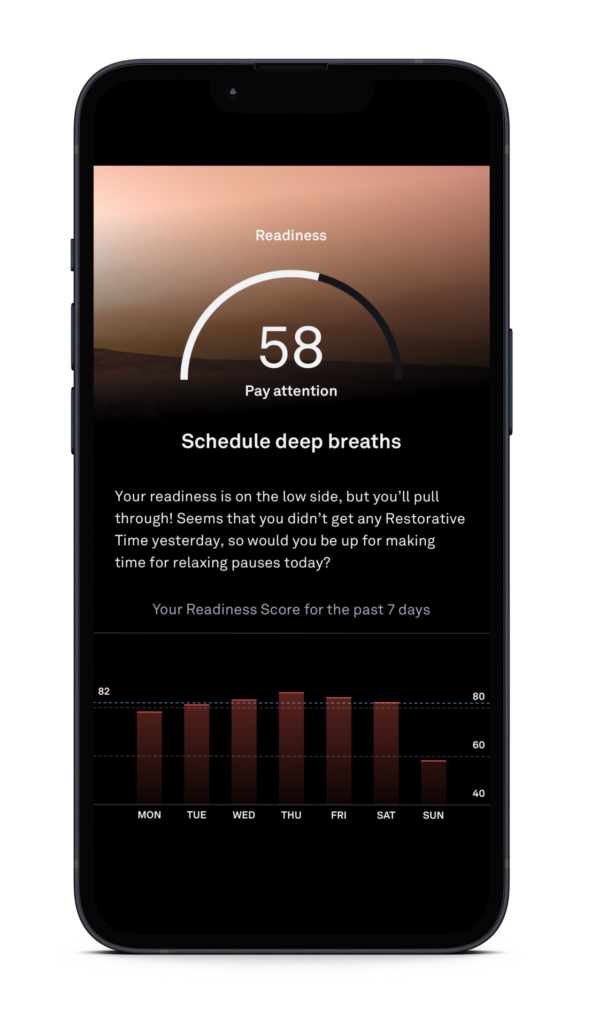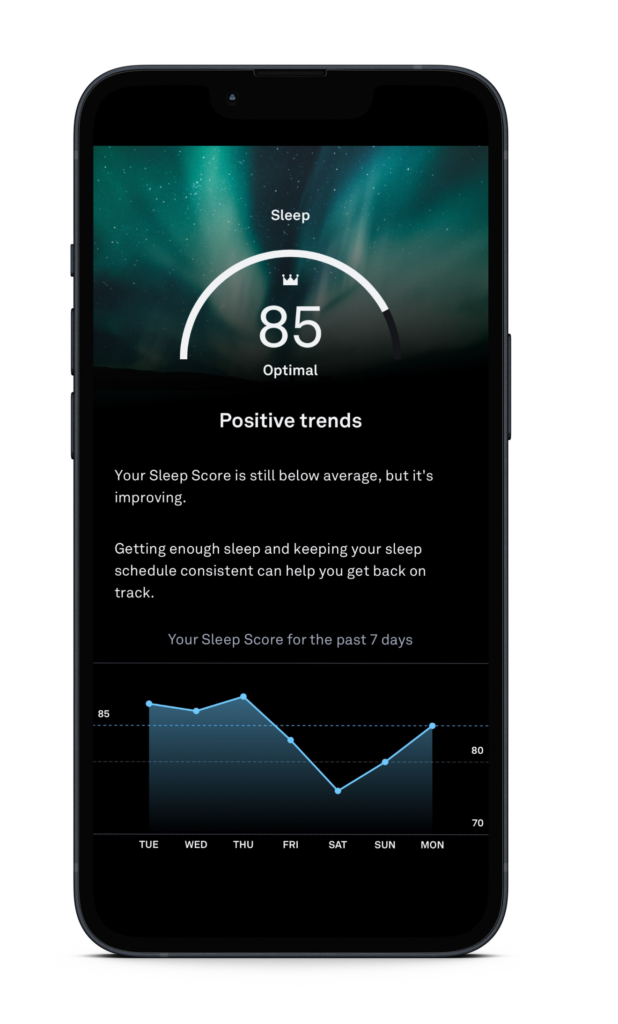Who: Raj K., 50, London, England
Surprising Oura insight: Since incorporating “easy” recovery runs at a low heart rate into his training program, Raj has seen improved HRV scores and more efficient recovery in his Oura data.
What led you to Oura?
I read Why We Sleep by Matthew Walker, PhD [sleep scientist], which sparked my fascination with sleep! I started measuring my sleep manually, then started tracking it on a wearable that I initially got to record my runs. However, I wasn’t convinced by the accuracy of this wearable. When I heard Walker talk about Oura, I got an Oura Ring!
READ MORE: How Sleep Helps Muscle Recovery and Growth
Tell us about your running routine and how Oura plays a role.
I’ve been running for seven years now — it’s my way of life. The habit is so ingrained in my life that it’s automatic — I just wake up and go. I started doing 5Ks, then half-marathons, marathons, and now ultra-marathons!

I run five to six times a week, so it’s important that I balance out all of my activity with recovery. I get excited trying to get the best Sleep Score possible, since sleep is fundamental to recovery.
This process has taught me a lot. One big lesson I’ve learned recently is the benefit of lower heart rate (HR) runs. These “easy runs” are an integral part of any runner’s training program, but it’s important that they’re actually easy! I realized that my runs weren’t easy. I was working too hard: my HR was high, and they were taking a long time to recover from.
READ MORE: 8 Possible Reasons Why Your Resting Heart Rate Is High
What does low-heart-rate training mean?
Low-heart-rate, or easy, runs help to build endurance and speed by boosting your aerobic capacity. At my next marathon, the New York marathon, my goal is to maintain a heart rate of 162 beats per minute, so this training helps with that.
I started doing these types of runs in March, and I had to run a 14-minute mile to maintain a stable HR of 125 bpm. In July, when I measured it again, my pace increased to 11 minutes, while keeping my HR the same. This is an indication that my aerobic capacity has increased.
What have you noticed in your Oura data since you started training this way?
Interestingly, my heart rate variability (HRV) has increased since March too. It used to be between 33 to 34, but now it’s consistently in the 40s. I’m also recovering better: my Sleep and Readiness Scores don’t drop as much after a run.
Before my low HR training, I would sleep slightly worse after a run. Now, my sleep and readiness remain stable after a low HR run.
I also use the Trends view to look at my sleep patterns over a long period — if my Sleep Score has been consistently optimal, I know that I can push myself in my training. If I have several nights of insufficient sleep, I tend to slightly back off from training.
What other practices have helped you in your running?
I’ve practiced becoming more mindful — both in daily life and on my runs. During the pandemic, like many people, I experienced increased stress and anxiety. I was about to change jobs, and I was worried about everything happening in the world. My mind tends to work at 100 miles an hour, and I find it hard to slow down. I explored the meditations on the Oura App (Explore content), as well as other meditation apps like Headspace and Calm, which I now use daily.
When I’m on a low HR run, I don’t listen to music; instead, I listen to my breath and my steps hitting the ground, and I tune into nature around me. This has really helped me practice mindfulness, which has seeped into every aspect of my life.
RELATED: This Member Ran 2 Sub-3-Hour Marathons in 6 Days: Here’s How He Used Oura To Train
What’s Your Oura Story?
Everyone’s story is unique, and we’d love to hear yours. Share your story here.












